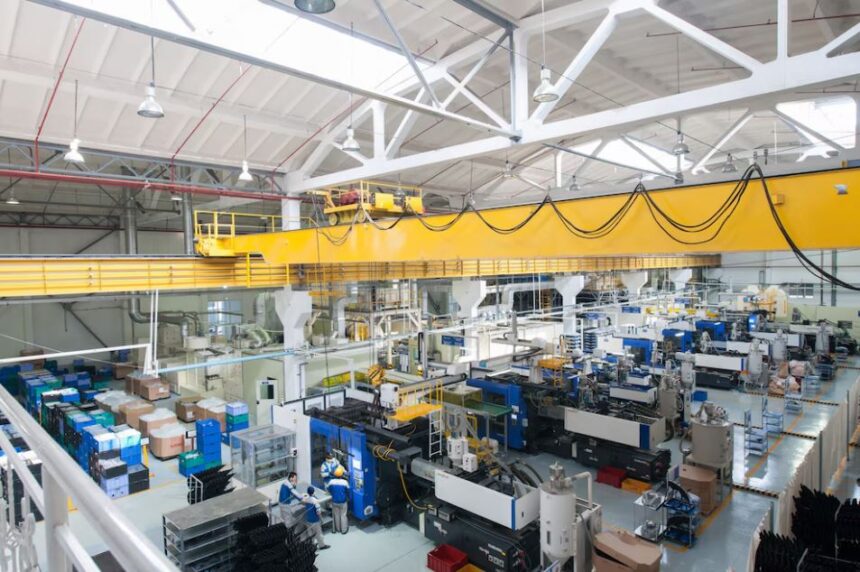Most people know Yamaha—maybe from a guitar you strummed in high school, a big sport bike roaring down Main Street, or an outboard engine fishing at the lake. So, when word started getting around about Yamaha shutting down parts of its business, a lot of folks started to wonder: is Yamaha going out of business altogether?
Well, the short answer is—no, they’re not. But they are rethinking where they want to be.
Let’s break down exactly what’s been going on lately.
What’s Actually Going On at Yamaha?
First, it helps to know that Yamaha is a huge company with many different products. Most people recognize Yamaha for motorcycles or musical instruments. But over the years, they’ve tried their hand at all sorts of things: snowmobiles, electric bikes, even conference speakerphones.
Recently, though, Yamaha has been making some deliberate choices to step back from a few businesses where things just haven’t been working out.
Yamaha Is Leaving the Snowmobile Market
One of the biggest headlines in the past year was Yamaha’s decision to leave the global snowmobile market. After more than 57 years of making sleds, Yamaha said the upcoming 2025 models would be their last.
This probably stings if you’re one of those diehard fans who loved their VK540 for trapping runs, or if you remember the first Enticer back in the day. But Yamaha says it’s just not profitable anymore. The snowmobile industry has been tough overall, and costs have gone up.
So, rather than sink more resources into a business that keeps shrinking, Yamaha says it wants to put that energy into other, more promising categories—like their motorcycles, side-by-sides, marine products, and the gearheads’ favorite music equipment.
Exit from the U.S. E-Bike Market
Then there’s e-bikes—a trend that exploded during the COVID-19 pandemic, as people avoided public transit and wanted to exercise outside. Yamaha actually has solid credentials here; they invented an early pedal-assist e-bike in Japan.
But things didn’t work out in the U.S. Over the past year, demand for e-bikes in the States faded—there’s been an oversupply and steep discounts everywhere. Retailers have struggled with excess inventory that just won’t move.
So, Yamaha’s U.S. e-bike division will wind down by the end of 2024. They made it clear this doesn’t mean they’re abandoning e-bikes everywhere—Japan and Europe are still going. The U.S. market just has too many hurdles right now, with not enough buyers to make it worthwhile.
Shutting Down the U.S. Unified Communications Subsidiary
You might not think “conference phones and web cams” when you hear Yamaha, but for a while, they’ve had a whole Unified Communications subsidiary based in the U.S.
This part of Yamaha made speakerphones, video collaboration gadgets, and teleconferencing gear—exactly the stuff offices rushed to buy for remote work. But as the tech landscape changed, it got harder to compete with tech giants and keep profits up.
So, in late 2023, Yamaha quietly announced that they would dissolve this subsidiary as part of a larger business reorganization. Basically, they’re refocusing on strengths and leaving the fight for office meetings to other specialists.
What’s Still Thriving at Yamaha?
Alright, we’ve covered what Yamaha is leaving behind. But what about everything else?
If you still hear the rumble of a Yamaha YZF-R1 or the roar of a boat powered by a Yamaha outboard, it’s because the company’s core businesses are actually in good health.
Yamaha is still a global leader in motorcycles—especially in Asia and Europe. Their marine division, which makes engines and boats, is steady. The iconic musical instrument business (think: keyboards, guitars, synthesizers, and pianos) is not just surviving; it’s thriving, serving everyone from kids in band class to top recording artists.
When Yamaha talks about “reallocating resources,” that’s what they mean—a shift of money, talent, and time into stronger business units with longtime staying power.
This Isn’t the First Time a Company Changes Course
If you look at companies over time, course corrections happen all the time. Think about Ford getting out of sedans to focus on SUVs and trucks, or how General Electric unloaded lighting and appliances to drill down on aviation and medical tech.
Yamaha is doing its own version now. Sometimes, it means saying goodbye to things that used to make sense, but don’t fit the long game anymore.
If you’ve worked for a big company, or known someone who has, you’ve probably felt the shake-up when units close or shift leadership. It’s tough for those employees and communities, for sure. But from the perspective of the company leaders, it’s usually more about staying competitive and sustainable—rather than drowning in deadweight.
Here’s a Quick Look: Yamaha’s Recent Market Exits
Here’s a simple overview of the main exits you’ve heard about:
| Business Segment | Status | Reason for Exit |
|---|---|---|
| Snowmobiles | Exiting Globally | Declining demand, costs, unprofitable market |
| U.S. E-bikes | Exiting U.S. only | Oversupply, soft demand, can’t sustain profit |
| Unified Communications | Dissolving (U.S.) | Business reorganization/reallocation |
So, for now, three big “goodbye” stories. But compared to the full Yamaha business, that’s just a piece of the picture.
Why Is Yamaha Making These Calls?
It all comes down to priorities. Yamaha wants to grow in places where they see a solid future, rather than try to prop up businesses that just don’t deliver anymore.
The motorcycle business, for example, has seen a steady stream of new models and healthy sales worldwide. The marine division, which covers everything from personal watercraft to big outboard motors, continues to be a money-maker.
As for musical instruments, Yamaha is one of the few brands that appeals to beginners, serious musicians, schools, and pros alike. They’ve continued innovating in digital music tech and acoustic gear too.
Pulling out of snowmobiles, e-bikes in the U.S., and the unified communications space lets Yamaha double down on these stable businesses.
Does This Mean Trouble for Yamaha Fans or Riders?
For snowmobile enthusiasts: yes, you’ll have to look elsewhere soon. Dealers will likely focus on parts and service for a while, but eventually, new Yamaha sleds will disappear from showroom floors.
If you bought a Yamaha e-bike in the States, you should know the support and service for those bikes may wind down by 2025. It’s worth checking with your retailer or Yamaha’s official site for updates on parts and repairs.
Everyone else? For the time being, it’s business as usual. If anything, this kind of strategy can help make sure motorcycles, outboards, keyboards, and audio gear stay funded and innovative. That’s a trade-off some fans are willing to make.
A Look at the Bigger Picture
Plenty of people mistake “leaving a business” for “going out of business.” It’s easy to think one means the other, especially with internet rumors and headlines swirling.
But that’s not what’s happening here. Yamaha is large, multination, and—despite trimming back in some areas—still profitable overall. Leadership sees a future in their main business areas, and they’re making moves now to keep those divisions competitive for years.
For folks interested in detailed industry analysis and ongoing company moves, business-focused sites like BlueBusinessMag keep track of these shifts and what they mean for both employees and customers.
Bottom Line: Is Yamaha Going Out of Business?
So, let’s put it plainly: Yamaha isn’t shutting down entirely. They’re not bankrupt, and there are no bankruptcy filings in the wings. The exits from snowmobiles, U.S. e-bikes, and the unified communications subsidiary reflect tough decisions—but not a company-wide crisis.
If you’re a dealer, a longtime fan, or just someone who’s heard confusing headlines, the reality is more straightforward. Yamaha’s motorcycle, marine, and musical instrument divisions are not just open—they’re going strong. That’s where you’ll see new models, technology, and ongoing investment.
For employees in affected divisions, business reorganizations always hurt. But for the broader base of Yamaha fans and everyday customers, there’s no sign of the brand disappearing from garages, band rooms, or lakes anytime soon.
If more big changes do develop, we’ll keep following the story and share the latest about Yamaha’s direction. For now, Yamaha’s still here—just trimmed down and focused on what it does best.
Also Read:










